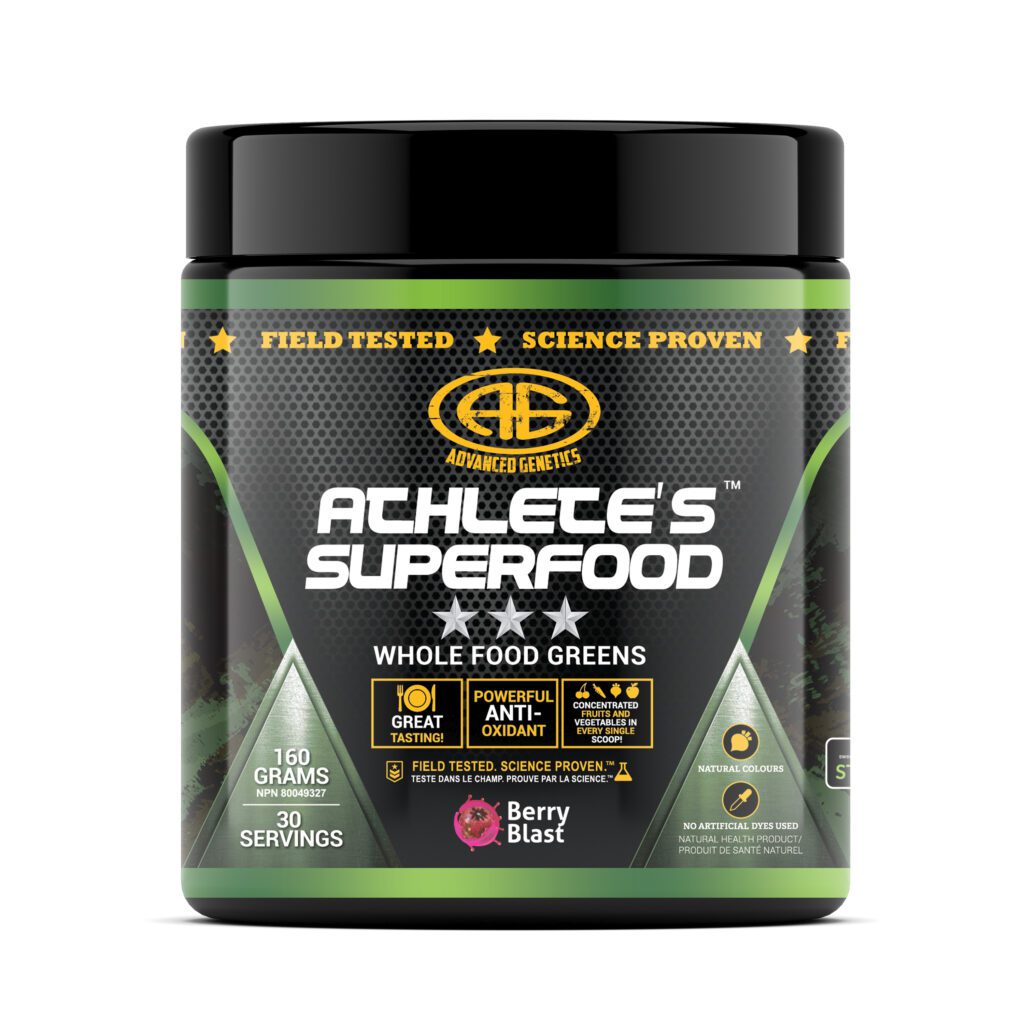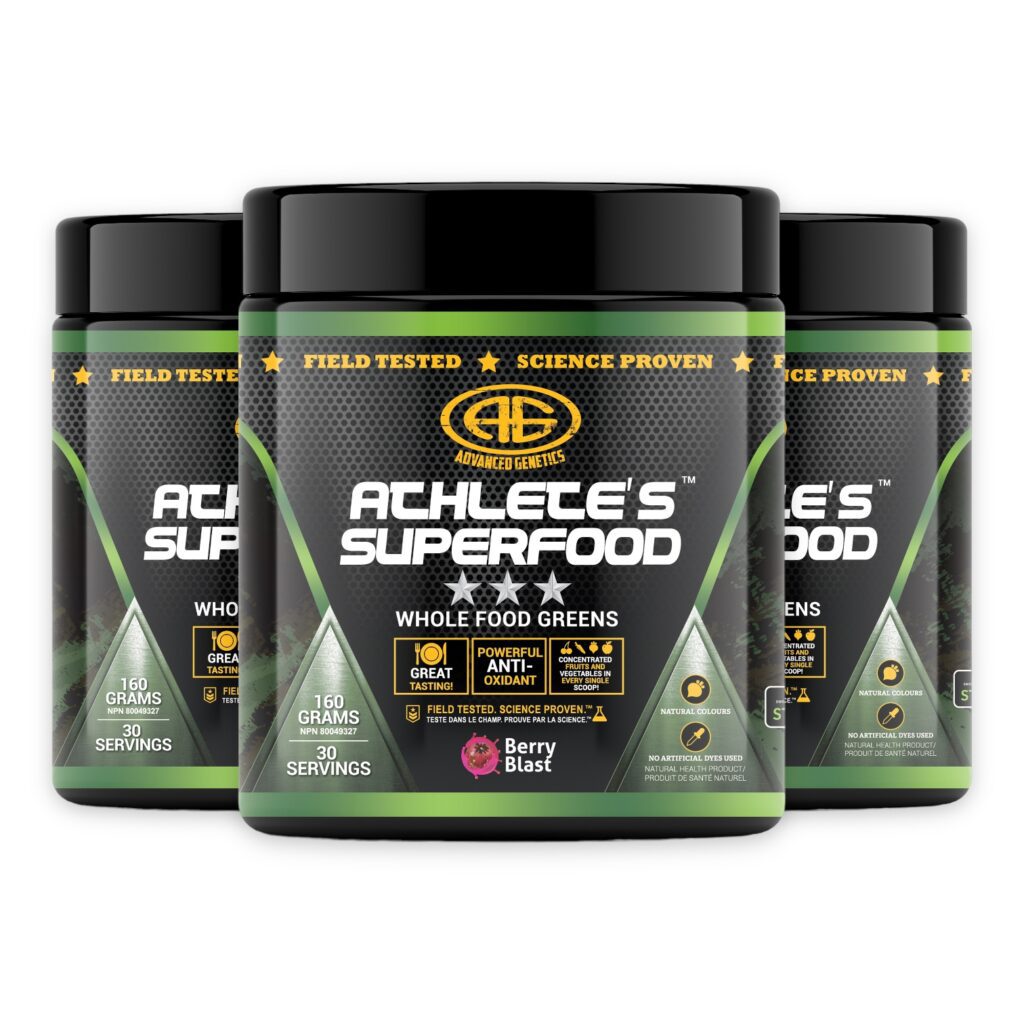Advanced Genetics
ATHLETE'S SUPERFOOD
ATHLETE'S SUPERFOOD
Couldn't load pickup availability
30 Servings
THE WORLD’S BEST TASTING GREENS FORMULA!
To grow muscle and perform optimally, you need to start internally – and only Athlete’s Superfood will ensure you get all the essential micronutrients to maximize your efforts. It begins by creating an alkaline environment which counters the acidity and inflammation caused by a diet rich in protein. Athlete’s Superfood also improves immune function – less time being sick, more time in the gym. This nutrient-dense, great-tasting formula makes getting your 6-8 servings of fruits and vegetables a breeze!
For maximum results, can be taken once or more daily. Mix with water anywhere and any time! Blend with protein/juice to create a complete meal replacement shake!
When do I take Athlete’s Superfood™?
We suggest starting your day with Athlete’s Superfood to get your body into an alkaline environment as quickly as possible.
Can I take it with food?
Absolutely! Athlete’s Superfood IS a food and can be added to any meal. It's a convenient way to get extra fruits and vegetables.
Should I only take it once per day?
You can use Athlete’s Superfood as often as you would eat fruit and vegetables. We don’t recommend a 100% substitution, but getting enough greens in one’s diet is extremely difficult. Athlete’s Superfood makes it that much easier!




